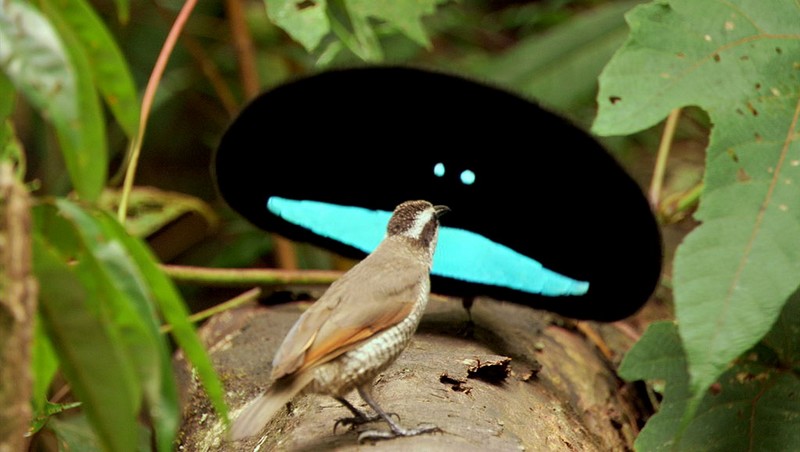
Rare East Indonesian bird with feathers so black that absorbs 99.96 percent light
A rare bird belonging to the eastern periphery of Indonesia, eastern Australia as well as Papua New Guinea flaunts feathers that are so dark that they hold the capability of absorbing around 99.96 percent of light. The black feathers of these birds are so black that it closely resembles the eternal darkness of black hole. This is a characteristic present in the male variety of the bird of paradise. When looked straight up, the feathers resemble a curtain of darkness present in two-dimension.
The lead co-author and scientist of the study, Dakota McCoy, explains in a report provided for Science Alert that this dark black color of the bird is a response to attract the female gender for the purpose of mating. The findings of this study were first jotted down on the website Nature.com.
The female sex of this species is generally a dull-brown colored bird. The male bird attracts its opposite sex through a ritual involving rigorous dancing and singing. The ornamental black color along with some blue feathers, look mesmerizing when the bird progresses with its ritual to mate with the female.
The female examines the display of feathers and chooses to mate with the male with the best ornamental show. These super black feathers look like an optical illusion if you observe it from a straight point of view. The dancing routine ensures that the male displays his darkest feathers to attract the female for a possible mating ritual.
The blue colored feathers lined along with the black ones are fewer in number. However, the blue looks shiny and glowing as the bird dances with its black feathers open which reflects very minimum light. If the blue colored feathers do not look good enough, the female is most likely to reject the potential suitor.
Now, as the female selects a suitor with only the darkest black feather, after numerous generations, the present birds have a selection of feathers that can easily be compared with the blackest material known to mankind which is black silicon or Vantablack. The researchers studied the feathers under a microscope and found that the same differed greatly in comparison to average down feathers. The microscopic arrangement of the feather resembled the bottle brush trees or coral reefs that prefer a tightly packed pattern. This contributes to efficient encapsulation of light with a jagged as well as the complex surface.
The feathers function in a similar fashion seen in the black silicon. The dark color visible on the feathers doesn’t just emerge from the color or pigmentation but also from the material’s uneven surface. This phenomenon is termed as structural absorption. This is just the opposite of what a mirror does while reflecting light. The structural absorption process is so effectual that upon painting a coat of gold dust, which is an extremely reflective material, over the surface, the material retains its pitch black color. The structural arrangement of the feathers negates the effects of the gold dust.


